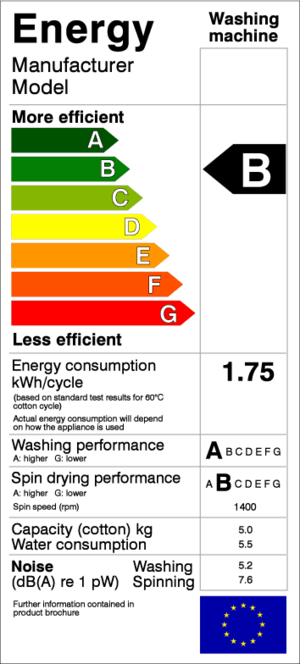
- Image via Wikipedia
Cutting electricity use by dishwashers and refrigerators could save 550 million metric tons of CO2 over the next 25 years
Major appliance makers and pro-efficiency groups have privately agreed on higher standards for the biggest energy users in the home, such as dishwashers and refrigerators.
The groups have written an agreement outlining these standards, and they will now take it to the Department of Energy, which sets energy standards for appliances every few years, U.S. EPA and Congress.
The Association of Home Appliance Manufacturers, or AHAM, represented the industry perspective in the talks. On the other side of the table were parties like the Natural Resources Defense Council, the Alliance to Save Energy and the American Council for an Energy-Efficient Economy — major advocates for aggressive energy-efficiency laws.
The mix of players is notable because virtually everyone that would have shown up to the DOE proceedings essentially convened outside of that process.
DOE’s procedure may seem arduous to some and thorough to others. After DOE proposes a standard, it takes formal input from industry, advocacy groups and the public. The procedure also combs through technical documents to try and find the maximum efficiency standard that causes the least economic harm.
All the information is compiled into documents that circulate among the interested parties again.
The process usually takes about three years, according to Andrew deLaski, executive director of the Appliance Standards Awareness Project, a pro-efficiency group.
A 3-year process completed in 3 months
DeLaski was also at the talks with AHAM, and he said this took about three months.
AHAM, like many other manufacturer groups, has sought to avoid a “patchwork” of regulations that lets some states require super-efficient appliances while others don’t. A 1987 law sets up “federal pre-emption,” so states can’t set appliance standards higher than Washington does (ClimateWire, June 17, 2009).
DOE is scheduled to set new standards for many appliances in the next few years, including the home’s biggest energy users: refrigerators, freezers, clothes washers and dryers, dishwashers and room air-conditioning units.
The agreement signed by AHAM and the other groups proposes higher standards for these appliances. Some will inch forward with 5 percent savings; others will leap ahead with almost 50 percent.
Refrigerators and freezers will use 10 to 30 percent less energy than current standards, depending on their type.
DeLaski said talking directly to the manufacturers also allowed energy-efficiency advocates to focus on the appliances that are the biggest sellers and the biggest energy users, and less on the small fish.
Emission cuts could be very large
The groups said the agreement, if adopted, would cut 550 million metric tons of CO2 over 25 years, the equivalent of taking 100 million cars off the road for a year.









